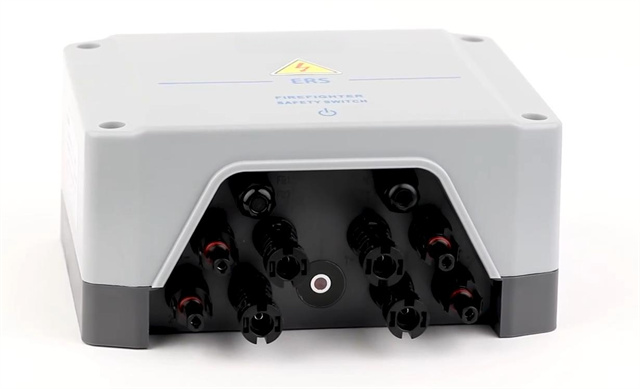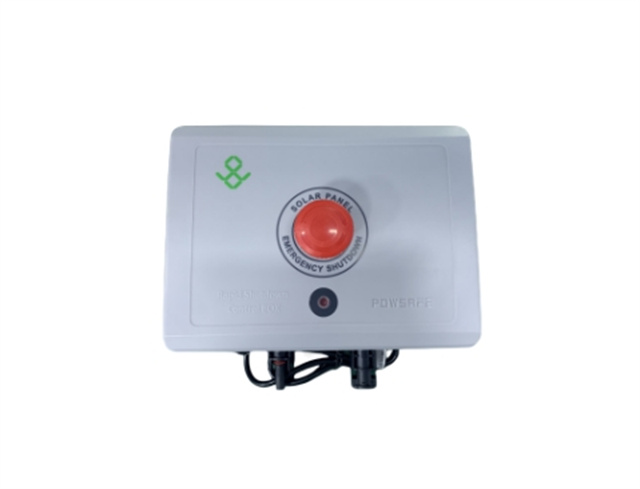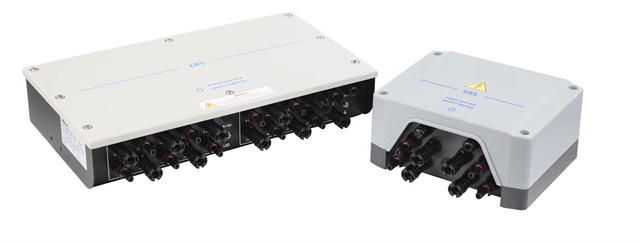Author:BLD Solar Energy SystemFROM:Solar System Converter Manufacturer TIME:2023-08-21
In the rapidly growing solar industry, maintaining and servicing rapid shutdown devices is a crucial aspect of ensuring the safety and efficiency of photovoltaic (PV) systems. Rapid shutdown devices are designed to mitigate the risks associated with potential electrical hazards during emergency situations or maintenance activities. This article will explore the importance of maintaining and servicing these devices, as well as the key considerations and best practices.

Rapid shutdown devices play a vital role in PV systems by rapidly de-energizing the system during emergencies or when maintenance work is being performed. These devices help protect the safety of firefighters, first responders, and maintenance personnel by reducing the risk of electrocution or fire hazards.
Regular maintenance and inspections of rapid shutdown devices ensure their proper functioning and compliance with safety standards. Ensuring that these devices are in good working condition minimizes the chances of accidents and maximizes the overall safety of the PV system.

When it comes to maintaining rapid shutdown devices, there are several key considerations:
2.1. Regular Inspections: Performing routine inspections of rapid shutdown devices is crucial to identify any signs of wear, damage, or malfunction. Professional technicians should conduct comprehensive inspections at regular intervals, checking for loose connections, damaged cables, or any other issues that may compromise the device's functionality.
2.2. Firmware Updates: It is essential to keep the firmware of rapid shutdown devices up to date. Manufacturers frequently release firmware updates to address any identified vulnerabilities or improve device performance. Regularly updating the firmware ensures optimal functionality and compliance with the latest safety standards.
2.3. Testing and Certification: Proper testing and certification of rapid shutdown devices are essential to ensure their reliability and compliance. These tests should include functionality tests, performance evaluations, and verification of compliance with relevant safety standards. Certification ensures that the devices meet industry-specific regulations and can be trusted to perform as intended.

When servicing rapid shutdown devices, it is important to adhere to best practices to ensure efficient and effective maintenance:
3.1. Training and Qualifications: Technicians responsible for servicing rapid shutdown devices should undergo comprehensive training and possess the necessary qualifications. They should be well-versed in the specific requirements of these devices and knowledgeable about safety protocols.
3.2. Documentation and Record-Keeping: Maintaining accurate and up-to-date documentation is crucial for tracking the maintenance history and identifying any recurring issues. This includes records of inspections, testing results, firmware updates, and any repairs or replacements performed on the devices.
3.3. Collaboration with Manufacturers: Establishing a strong working relationship with manufacturers is beneficial when servicing rapid shutdown devices. Manufacturers can provide valuable insights, technical support, and guidance on maintenance procedures and troubleshooting.
In conclusion, maintaining and servicing rapid shutdown devices is essential for the safe and efficient operation of photovoltaic systems. Regular inspections, firmware updates, testing, and adherence to best practices contribute to the longevity and effectiveness of these devices. By prioritizing proper maintenance, solar industry professionals can ensure the overall safety of PV systems and mitigate potential hazards.
